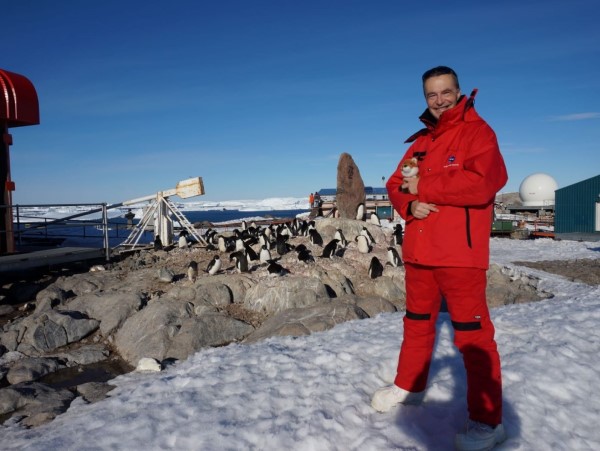
Warren Cairns from Concordia Station, Italy’s most remote outpost
My name is Warren Cairns, I’m a researcher with the CNR, in the Institute for the Dynamics of Environmental Processes, located in Edificio Delta of the Scientific Campus of Ca' Foscari University, soon to become main seat of the Institute for Polar Sciences.
Our location means we work in close contact and collaboration with the Department of Environmental Sciences, Informatics and Statistics, to the point where we also teach on courses and actively and enthusiastically participate in outreach opportunities such as the Kids University run by the University communications office.
The Journey to Antarctica
At the end of 2018, I started my trip to Antarctica to carry out research at Concordia Station, the French Italian base on the high plateau.
Concordia Station in situated on the high Antarctic plateau, at an altitude of 3200 m on the top of Dome C, one of the highest domes of ice in the entire continent. The site was chosen because underneath is some of the oldest ice on the planet, dating back to over 800.000 years ago.
Just reaching Concordia Station is an odyssey, a flight from Venice to Dubai, Dubai to Sydney and in the spring Sydney to Christchurch, Christchurch to Mario Zucchelli station (MZS), MZS to Dome C (DC). However, in the Antarctic summer when I left (23rd December), the air strip at MZS for heavy aircraft was no longer viable as the sea ice had thinned too much, so I had to fly from Sydney to Hobart in Tasmania and catch the French ice patrol vessel Astrolabe. We boarded on Christmas day and departed Hobart on the 27 th of December to out run a storm, so we had a smoother crossing.
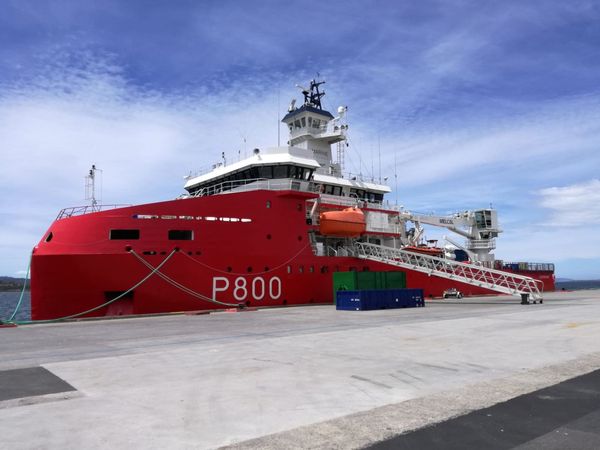
After 3 days of navigation, the weather started turning colder. By the evening of the 30th of December, it started snowing at sea. Waking on New Years Eve, we began to see our first icebergs.
By the late afternoon the wind started rising as a storm approached, so the Captain decided to navigate behind a large 7 km long tabular iceberg with calm seas on the leeward side, so we could celebrate the new year in relative comfort. On New Year's day we resumed the navigation towards Dumont D’Urville (DDU), the French coastal station and we started to see some of its inhabitants. As it was still stormy outside and too windy to dock at the station, we once again had to take refuge among the icebergs within sight of the base.
Finally, on the 2nd of January the wind dropped and the sea calmed and we could approach DDU, a station built on and around a penguin colony. Its natural inhabitants seemed oblivious to the red ship approaching. On landing we felt like intruders in a new world, outnumbered by the indigenous inhabitants. We climbed up to the station where we waited for a helicopter to take us to the ski way to meet our aircraft that would take us finally to Dome C. On the Twin Otter aircraft, the passengers share the cabin with their baggage and the cargo. After a long flight over the vast expanse of the Antarctic interior we finally reached our destination. 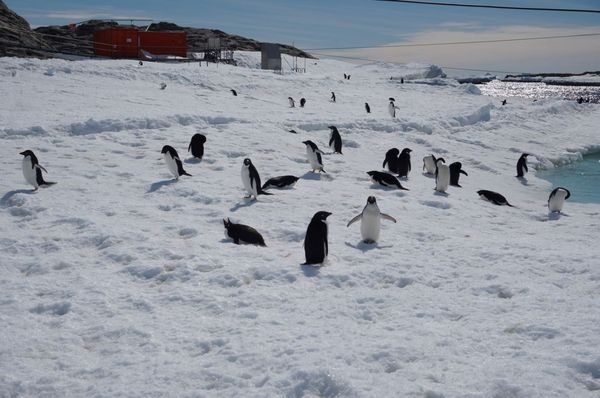
The first thing that hits you is the cold - at the coast the temperature was a balmy -2°C, on the high plateau the temperature reached -35°C.
The second thing you notice is the lack of oxigen. The air pressure here is 646 hPa, normal air pressure at sea level is around 1012 hPa, every movement makes you breathless, even taking off you heavy clothing leaves you fighting for breath.
The last thing to hit you is the light, blue skies and white everywhere, sunlight reflecting off every surface. For now, there’s nothing to do but acclimatise and find the materials that were sent from Venice. Work can start once I get my breath back.
My daily life at the Concordia Station
Life at Concordia Station in some ways is quite routine, seeing as there is no day and night cycle, the fixed points of the day are meal times: breakfast 7:00 to 7:45, lunch 12:00 to 12:45 and dinner 19:00 to 19:45.
Your scientific activity is based around these fixed points in the day. During the first 2 weeks I was in one of the dormitory tents with very basic facilities and heated with a kerosene stove. I would wake at 6:45, get changed and walk to the base to use the bathroom, have breakfast and brush my teeth. At 8 am after coffee there’s a daily briefing by the station leader on maintenance activity, when to expect flights and news on what’s happening.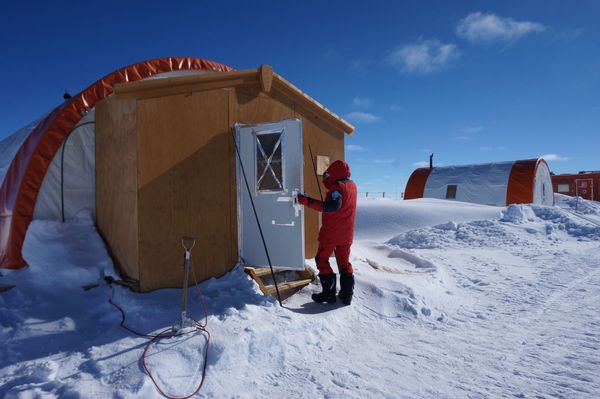
After the briefing, it’s time to put on cold weather gear and go out sampling. It’s a 15 minute walk from the base to the atmospheric shelter, where I we keep our sampling materials and cleaned bottles for collecting the snow. 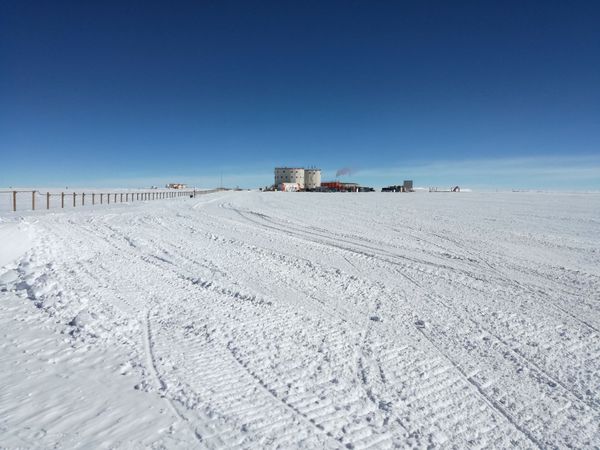
Together with the French GMostral programme we are studying the exchanges of mercury between
the atmosphere and the snow pack. It has long been suspected that Antarctica is a sink for atmospheric mercury, and our studies show that the exchanges are quite large, and a small fraction
of the mercury deposited in the snow and frost each time remains and is slowly buried over time. Our French counterparts operate a Tekran 2537 instrument that measures the atmospheric mercury with a frequency of about 15 minutes, this instrument is virtually identical to that operated by the CNR-IDPA and the Ca' Foscari University at Col Margherita (Passo San Pellegrino) in the Dolomites above Falcade. Our task is to collect surface and subsurface snow from depths of 0-3 and 3-6 cm below the surface, as these are the most active layers and correlate the levels we find with the atmospheric measurements.

The instrumentation for doing this is at Via Torino, our task is to collect the samples, preserve them at -20°C or below and ensure their integrity before analysis. The first step in keeping sample integrity is to avoid contamination, so once we have prepared the bottles, we walk into the clean area, always on the same path and sample downwind to the wind is against us while wearing polyethylene gloves to avoid contaminating the snow.
On return to the shelter, the bottles are bagged, the labels checked and then placed in an insulated box in the sample shipping container. This activity is carried out twice a day. Once a day we collect deposition samples (frost and snow) from special tables, and once every 2 days we go further out and collect samples from an even cleaner area together with our French colleagues for total mercury and mercury isotope analysis.
We are gradually needing to move further and further away from the base, as the increased tempo in operations over time has contaminated the area nearby. So, if we want to see pollution carried by long range transport, from beyond Antarctica to study the global background, we must go to an area that is unaffected by base activities.
While this activity takes up a reasonable fraction of the day, there’s still time to wash your clothes and yourself. Generally, as the water is produced from melted snow, an operation that requires a lot of energy, we try to save and recycle as much as we can. Drinking water is freshly melted snow with salts added, because the snow is too pure to drink as it is. The grey water (from showering, washing machines, and cleaning kitchen materials) is filtered and recycled with a system like that onboard the International Space Station. To make recycling easier, we must use special soaps that are easier to remove from the water, people also shave less to avoid adding hairs that could block the filters.
The cold also helps us save water, as we sweat less, so we can shower less often than at home.
We are also expected to help in base operations, this means we wash the dishes after meals, help load and unload cargo on to the aircraft when it arrives. Some people help the chef by chopping vegetables or helping with food preparation. Concordia is like a small village where everybody is expected to help keep it running.
In the weekend, but especially on Sunday, activity is reduced, and you can go and visit the laboratories and work areas of your colleagues, plus the sights offered by Concordia Station.
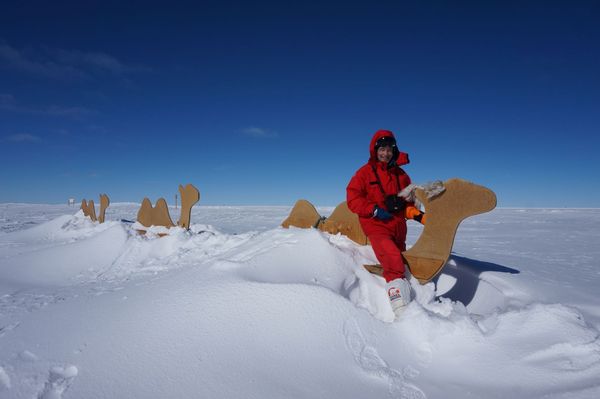
Photographs and videos taken by Warren Cairns, copyright PNRA
